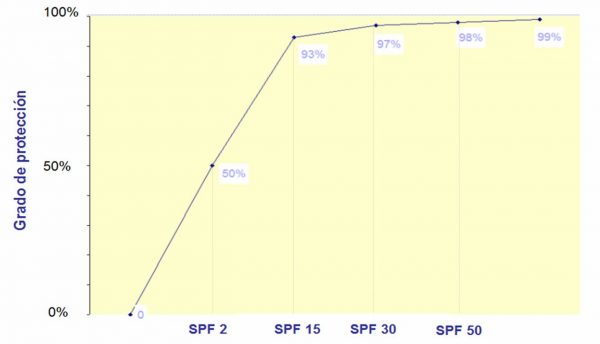We all try to take the best care of ourselves during the summer. Dermatologists are very insistent on this subject, as the sun is the main cause of skin cancer. As it could not be otherwise, being August and taking into account that many of you will be at the beach on vacation, today I share with you the basic ideas on sun protection that I hope will be useful.
1-What is sun protection?
When we talk about sun protection, we always think of the sunscreen or sunscreen spray we use at the beach or the swimming pool. However, sun protection is not just that. To protect ourselves from the sun we can use many other elements, as useful or even more useful than creams.
- Avoid the central hours of the day
- Always seek shade
- Wear a hat or cap
- Wear clothing with a sun protection factor (UPF).
2- What does the SPF (sun protection factor) mean?
The sun protection factor (SPF) of creams refers to their ability to block UVB radiation. It indicates the number of times multiplied by the time it takes for our skin to burn. In other words, if my skin turns red in 10 minutes in the sun, using an SPF50, it will turn red after 500 minutes.

An SPF 50 blocks almost 100% of UVB rays (more than 98%), so all products labeled with higher SPFs will actually have very little difference with SPF50. Thus, it is not true that an SPF 100 protects twice as much as a 50. European regulations recommend labeling all SPFs higher than 50 as “SPF50+” in order to avoid this type of confusion.
UVA radiation, which has the greatest influence on skin aging, is also blocked by sunscreens. European regulations require products to have at least one third of the protection indicated for UVB.
3- What should I look for when choosing sunscreen?
My advice, as a dermatologist, will always be to go for the maximum SPF, i.e. 50+.
The protection provided by creams is greatly reduced by our imperfect way of using them, so I think it makes sense to go for the one that provides the most protection.
Some people use 30 for the body and 50 for the face, which makes no sense to me. Many times it is because of the desire to get a tan. However, let’s remember that there is no such thing as a healthy tan. Any degree of pigmentation of our skin is a defense mechanism against something that feels like aggression, in this case, sun exposure. The more tanning we have, the more signs we have that the skin has had to defend itself against something it considers harmful.
4-When should I apply my sunscreen?
Traditionally it was heard that it was important to apply the sunscreen 30 minutes before, for it to take effect. This is currently considered a myth and I will explain why in this article.
However, on beach or pool days, I think it is advisable to apply it quietly at home a while before arriving at the beach or pool, as it is likely to do so with greater precision and forcefulness.
Remember that it is advisable to reapply the sunscreen every 2 hours and after each swim.
5- What about children?
Babies under 6 months of age should preferably be protected with clothing, an umbrella and a hat. From that age, in addition to clothing (which in my opinion are much more practical) and a hat, we can use photoprotection creams normally. The whole family can safely use products for children, which are usually specifically tested, and also contain less alcohol and perfumes.
